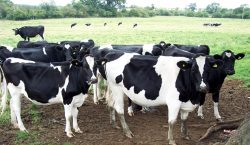

Fishermen rely on the sea as their source of food. It is different from a farmer whose relationship is with his land, his animals – solid ground. Tides keep moving.
Twice a day the sea ebbs and flows, and the character of the beach and the sand changes.
The fishermen launch their small dugouts at high tide – as the tide turns. The dugouts go out on the receding current loaded with long nets. These are cast in a semi-circle and brought back to shore where two teams of men start pulling them in against the receding tide.
It is amazingly hard work and takes up to 20 strong men to slowly bring in the catch. Standing in the waves they pull against the inexorable force of the water – walking backwards until the rope slackens at the back of the line- and then running forward to take up a new position in the waves at the front.
Slowly the catch is pulled in – each man attaching himself to the rope and hauling it slowly over his shoulder as he moves up the beach with that heavy net until the glistening catch is landed.
By this time the women are waiting with their buckets and basins to sort what is for the household, what will be sold, what goes to town, what to the local restaurant. Then the village is quiet – sleepy in the midday heat.
Rio Savane, an inexpensive camping resort just north of Beira, is nestled into a coconut grove on the banks of the river just as it meets the sea.
Mangroves and crabs on one side and on the other – the literally endless beaches of Mozambiq-ue.
It is a great place for a holiday. The sea scours out the stress and strain of work and life in Zimbabwe and leaves a space refreshed and ready for new ideas. The beach is a good place to think – we went for long walks and noted the debris brought in by the sea on each tide-tangled nets, driftwood, old floats, shells and seeds ready to sprout.
Many people far from the sea are distrustful of eating food from the sea – especially shell fish.
I have had friends adamantly refusing to eat prawns, referring to them disgustedly as pink cockroaches.
Other things that come in shells like clams, or oysters or crabs are also deeply suspicious.
I had a great time crab watching – the tiny black ones with one huge red pincer that bury themselves in the mangroves, minute, sand-coloured ones like spiders that scurry almost invisibly on the beach – blue runners with long blue legs and white pincers that float in the shallows of the river estuary, and big pale crabs like cartoons – with eyes on stalks on the top of their heads scuttling sideways up and down in the high tide froth.
On our last evening we ate them – huge crabs from the river – with bright red lobster legs in a coconut curry sauce. They were delicious. As were the clams that preceded them. And the pink prawns with chips on another night. No cockroach qualms for me. (all restaurant meals around US$10)
And one night we cooked a 5kg monster fish – wrapped in foil on the braai. And thought of all the work that had brought it from the ocean to our table. Thankful for the gifts of the sea and the land.
– g.jeke@yahoo.com